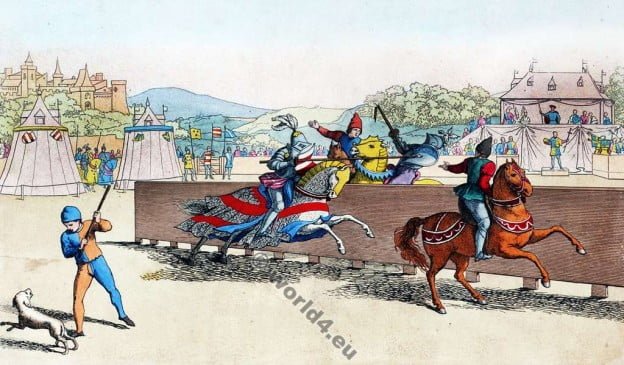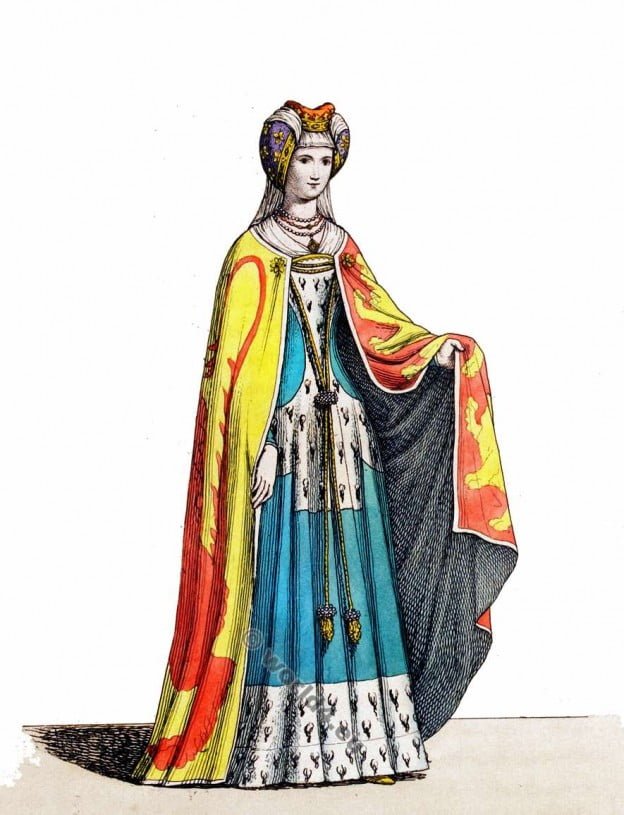Tournament leaders. Jousting Knights. From the King René manuscript
Tag: Gothic costumes
Medieval gothic era. The clothes in the Middle Ages reflected the place of the person dressed in the medieval estate system of Christian Europe again. The color choice was a distinguishing factor between the estates. In the Gothic clothing became increasingly elaborate. The fashions of the early, high and late Gothic differ very much from each other. At the beginning of the early Gothic in the 13th century, the male fashion of female approaches sharply. Both sexes have long outerwear in the form of a so-called Cotte. It predominates initially seem a little form-fitting fashion, showing essentially towering, slim body – a common ground with the gothic architecture.
Défi du Tournoi. Costumes du 15ème siècle.
Challenge of the Tournament. Chivalrous scene at the court of King René. Costumes of the 15th century. Costumes du 15ème siècle. Le bon Roi René, René Ier d’Anjou ou Renatus d’Anjou de 1409 à 1480.
Jeu de Paume. Médiévale jeu de balle au 13ème siècle.
Jeu de Paume (French for “play with the palm”) was a forerunner of tennis, the game is already occupied in the Middle Ages in cloisters.
Torture au Moyen Age. Italie vêtements du 13ème siècle.
Torture au Moyen Age. Italie vêtements du 13ème siècle. Procès verbal, extrait d’une procédure criminelle du XV, siècle. Costumes historiques. Gravés par Paul Mercuri, texte historique par Camille Bonnard.
Costume Milan Italie médiévale.
Costume Milan Italie médiévale du 14ème siècle
Tribunal des Marchands. Costumes 14ème siècle.
Tribunal des Marchands. Costumes 14ème siècle.
Charles D’Anjou. French Capetian royal dynasty. 13th century.
Charles I of Anjou, a side branch of the French royal dynasty Capetian.
Tournament of Knights. 14th century. Medieval clothing.
Historical costumes from the thirteenth, fourteenth and fifteenth centuries by Camille Bonnard and Paul Mercuri
Mode féminine du Moyen Age. Noble anglaise. 13ème siècle.
Les femmes des gentilshommes unissaient sur leurs manteaux ou surcots les armoiries de leurs époux avec celles de leur famille.
Costumes de Noblesse du 14ème siècle. Histoire de la mode médiévale.
La jeune fille qui parle la queue est coiffée d’un bonnet de velours noir. La robe est jaune et garnie sur la poitrine de velours noir; la robe de dessous est verte et la chaussure est noire.










